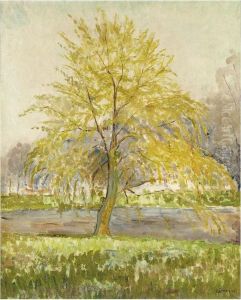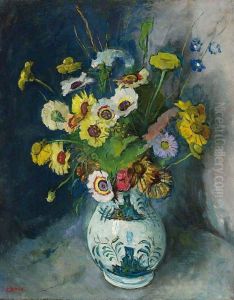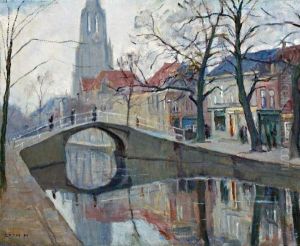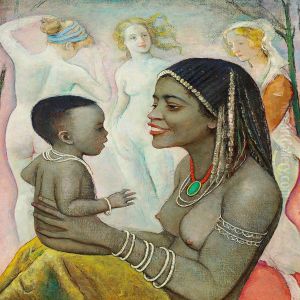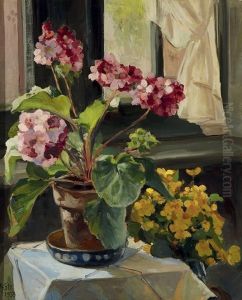Maurice Goth Paintings
Maurice Goth was a Hungarian-born artist, known for his contributions to portrait painting and his distinct style that bridged the gap between traditional academic painting and the modern movements of the early 20th century. Born on November 11, 1873, in Szeged, Hungary, Goth was immersed in an environment that fostered his artistic talents from a young age. He pursued his education in art at the Hungarian University of Fine Arts in Budapest, where he honed his skills and developed a foundational understanding of classical painting techniques.
Throughout his career, Goth traveled extensively, which greatly influenced his artistic style. He lived and worked in various cultural centers across Europe, including Paris, which was then the epicenter of the art world. During his time in Paris, he was exposed to a range of artistic movements, including Impressionism and Post-Impressionism, which left a lasting impact on his work. Despite these influences, Goth retained a strong connection to his Hungarian roots and often depicted subjects from his homeland in his paintings.
Goth's work was characterized by a rich palette, elaborate textures, and a focus on the human figure, particularly in his portraits. He was adept at capturing the psychological depth of his subjects, which gave his portraits a distinctive and powerful presence. His style evolved over time, incorporating more expressive brushwork and a bolder use of color, reflecting the broader shifts in the art world during his lifetime.
Maurice Goth's contribution to art was not only through his paintings but also through his role as an educator. He taught at various institutions, sharing his knowledge and passion for art with a younger generation of artists. Goth's legacy continues to be appreciated by art historians and collectors, with his works held in private collections and museums around the world.
Maurice Goth passed away on December 28, 1944, in New York, United States. His life journey from Hungary to the vibrant art scenes of Europe and eventually to the United States is a testament to his enduring quest for artistic growth and expression. Despite the challenges of his era, including two World Wars and significant political upheaval, Goth's art remains a celebration of the human spirit and the timeless pursuit of beauty.
